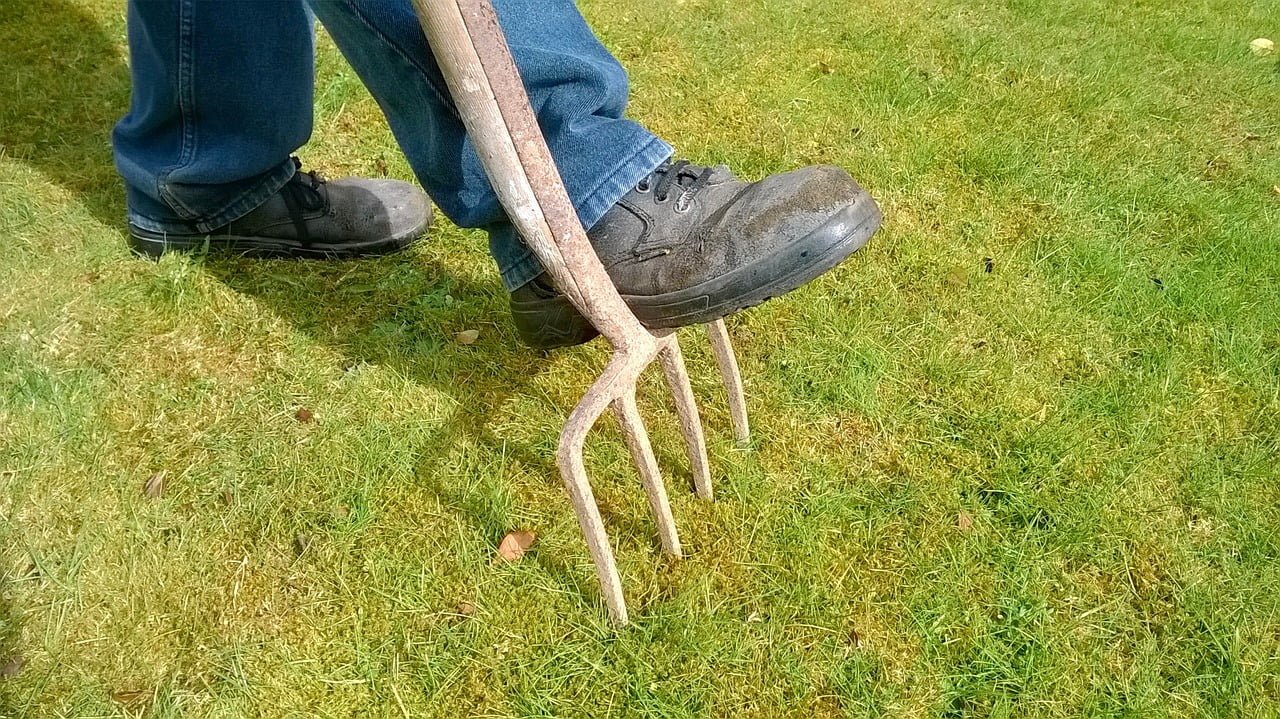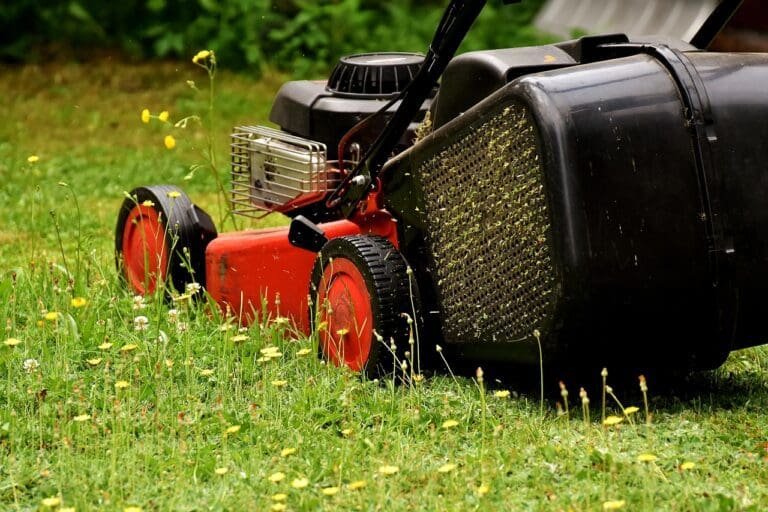A beautiful, lush lawn is a pride and joy for many gardeners. But over time, the health of your grass can suffer from soil compaction, thatch build up, poor drainage and other issues that stress the roots. The great news is that revitalising your lawn back to its former glory can be as simple as aerating it on a regular basis.
Top Tip
Avoid aerating during drought or extreme heat as it can cause stress to your grass; instead, opt for a time when the soil is moist and the weather is mild.
This post contains affiliate links which means we may make commission from any qualifying sales with no extra cost to yourself.
What is Lawn Aeration and Why is it Important?

Lawn aeration is the process of perforating the soil by removing small plugs or cores of dirt using an aerator machine. This creates holes that allow air, water and nutrients to better penetrate the soil and reach the grass roots underneath.
The improved circulation stimulates stronger, deeper root growth. There are also manual aerators like spike-toothed rakes, garden forks or shoes with spikes attached that can punch holes in the ground.
Regularly aerating your lawn is crucial for maintaining its health and beauty over the long term. Here’s why it’s so important:
-
Relieves Soil Compaction: Foot traffic, equipment use and even watering can compress soil over time. Aerating literally opens up the ground to undo this compaction.
-
Improves Drainage: Compaction prevents water from properly draining through the soil, leading to pooling and runoff. The holes created by aerating provide channels for better permeability.
-
Reduces Thatch Buildup: An accumulation of grass stems, fallen leaves and clippings called thatch builds up over time, blocking water, air and nutrients from properly filtering down. Aerating helps break down this debris layer.
-
Encourages Deeper Roots: The improved circulation prompts grass plants to grow longer roots that can reach water and nutrients deeper in the soil, creating a more resilient lawn.
-
Strengthens Grass: Relieving compaction and thatch buildup minimizes stress on the plants. Aerating strengthens the grass to better withstand issues like drought, heat and foot traffic.
How Do I Know If My Lawn Needs Aeration?
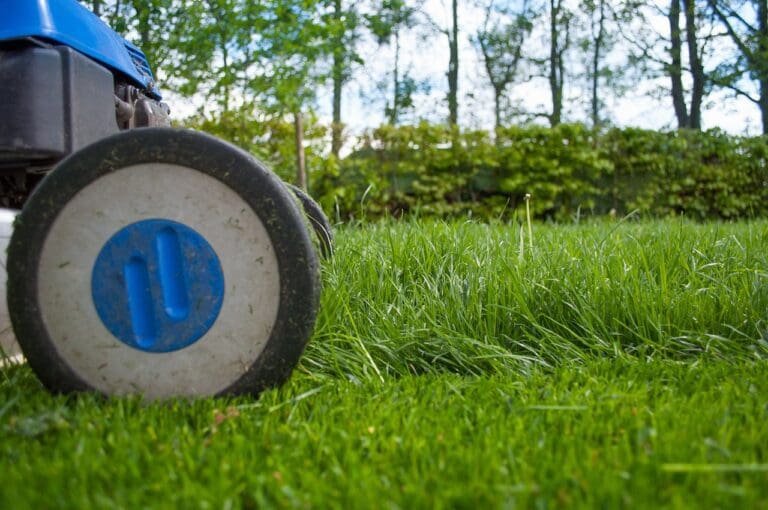
It’s a good idea to aerate most lawns every 1-3 years as regular maintenance. But watch for these signs that your lawn is especially in need of some aeration love:
-
Excess Water Pooling – Standing water after rain or irrigation indicates poor drainage resulting from compacted soil. Aerating will create channels for improved permeability.
-
Compacted Soil – Press a screwdriver into the soil in a few spots. If it’s difficult to push more than a couple inches down, the ground is too dense and needs opening up.
-
Thatch Buildup – An excess layer of debris will feel spongy underfoot and may appear darker than the grass. Raking away a small patch will reveal if a thatch layer is present.
-
Poor Grass Growth – If your lawn is thinning out or has areas of reduced growth, the grass roots are likely struggling to access sufficient air and water.
When is the Best Time to Aerate?
In the United Kingdom, the most favourable times to aerate your lawn fall in the spring and autumn seasons. During these periods, the soil usually has a moist consistency, which greatly facilitates the process of creating holes in the ground.
This is particularly crucial for the aeration process as it ensures that the soil can be penetrated easily without causing unnecessary compaction or damage to the turf.
Additionally, many individuals prefer to carry out this essential lawn care task in the spring, as this aligns perfectly with the grass’s natural growth cycle. Spring is a time of renewal and rejuvenation for many plant species, and aerating the lawn during this period helps to promote strong and healthy growth for the upcoming summer months.
How to Aerate Your Lawn Like a Pro
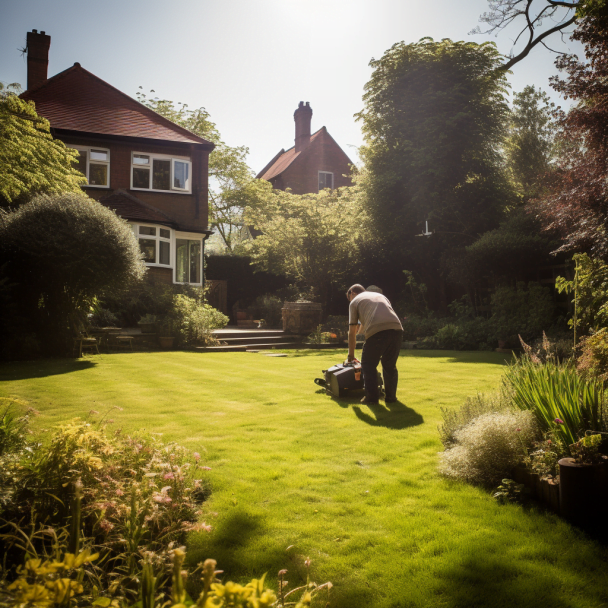
Follow this process for a DIY lawn aeration job well done:
Step 1: Choose the Right Aerator
Consider your lawn’s size and your own strength when selecting an aerator. For most residential lawns, a core aerator rented from your local hardware store for a half day will be sufficient and provide the best results. Core aerators actually remove plugs of soil, unlike spike aerators that just poke holes. Manual options like aerator shoes or garden forks require more labor but may work for very small lawns.
Step 2: Pre-Aerate Prep
Mow your lawn very short so the aerator can easily access the soil beneath. Next, use a dethatching rake (scarifier) to remove any excess debris before it gets pushed back into the holes. Finish with another pass of the mower on a low setting with a grass catcher to pick up the debris.
Step 3: Aerate Like a Pro
Mark any sprinkler heads or irrigation lines to avoid damaging them. Starting along one edge of the lawn, insert the aerator tines into the soil 2-3 inches deep at 2-4 inch intervals. Make overlapping passes across the entire lawn walking in perpendicular directions to cover all areas. If using a core aerator, periodically empty the bucket of extracted plugs. For low spots, top dress by sprinkling a 0.25 inch layer of compost to fill the holes (optional).
Step 4: Post-Aeration Care
Lightly water the lawn after aeration to help dissolve any remaining cores left behind. Let the lawn completely dry out over the next 2-4 weeks before applying fertilizer to avoid burning new shoots. Once aeration is complete, over-seed any thin areas to boost recovery. In about a week after grass has recovered, mow again on a high setting.
Mistakes to Avoid
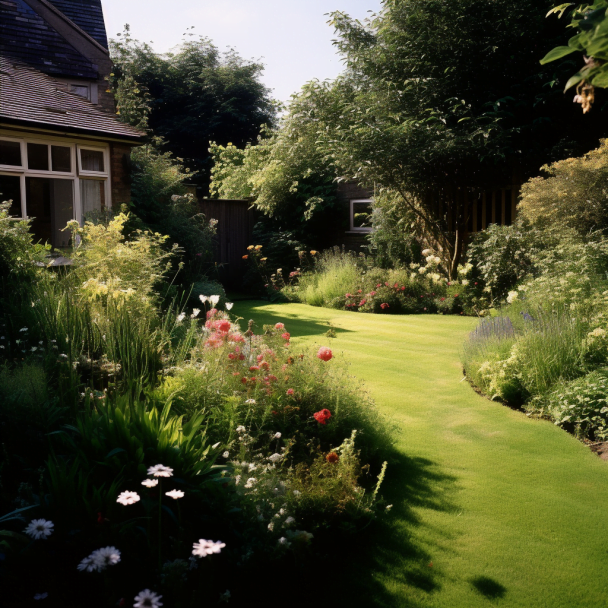
Proper aftercare and avoiding these mistakes will ensure successful aeration results:
- Don’t over-water or let the lawn dry out completely – stick to light daily watering to maintain ideal moisture.
- Avoid aerating during hot, dry weather which stresses grass further.
- Be sure to fertilize in 2-4 weeks after aerating to provide nutrients that aid regrowth.
- Don’t aerate deeper than 2-3 inches to prevent potential damage to grass roots.
- Dull tines won’t properly penetrate – use sharp, high quality tines for best results.
Final thoughts
Like any living thing, your lawn needs care and attention. Regular aeration relieves soil compaction, battles thatch buildup, improves drainage and circulation, and strengthens your grass against environmental stresses. Pay attention for signs your lawn could use some aeration love. Proper timing and practices will lead to a lush, enviable lawn you’ll be proud to show off!
Frequently Asked Questions
Q. Should I dethatch or aerate first?
It’s best to dethatch (scarify) first to remove excess debris before it gets pushed back into the lawn during the aeration process.
Q. When is the ideal time to aerate lawns in the UK?
In the United Kingdom, the most favourable times to aerate your lawn fall in the spring and autumn seasons. During these periods, the soil usually has a moist consistency, which greatly facilitates the process of creating holes in the ground. Spring is a time of renewal and rejuvenation for many plant species, and aerating the lawn during this period helps to promote strong and healthy growth for the upcoming summer months.
Q. What’s the difference between dethatching and aerating?
Dethatching clears away dead material sitting above the soil surface while aerating perforates the soil itself to improve circulation.
Q. Is core aeration or spike aeration more effective?
Core aerators that actually remove plugs of soil work better than spike aerators that just poke holes.
Q. Should my lawn be wet or dry when aerating?
Aim to aerate when the soil has some moisture but isn’t waterlogged. Light moisture helps the soil settle back around the holes.

